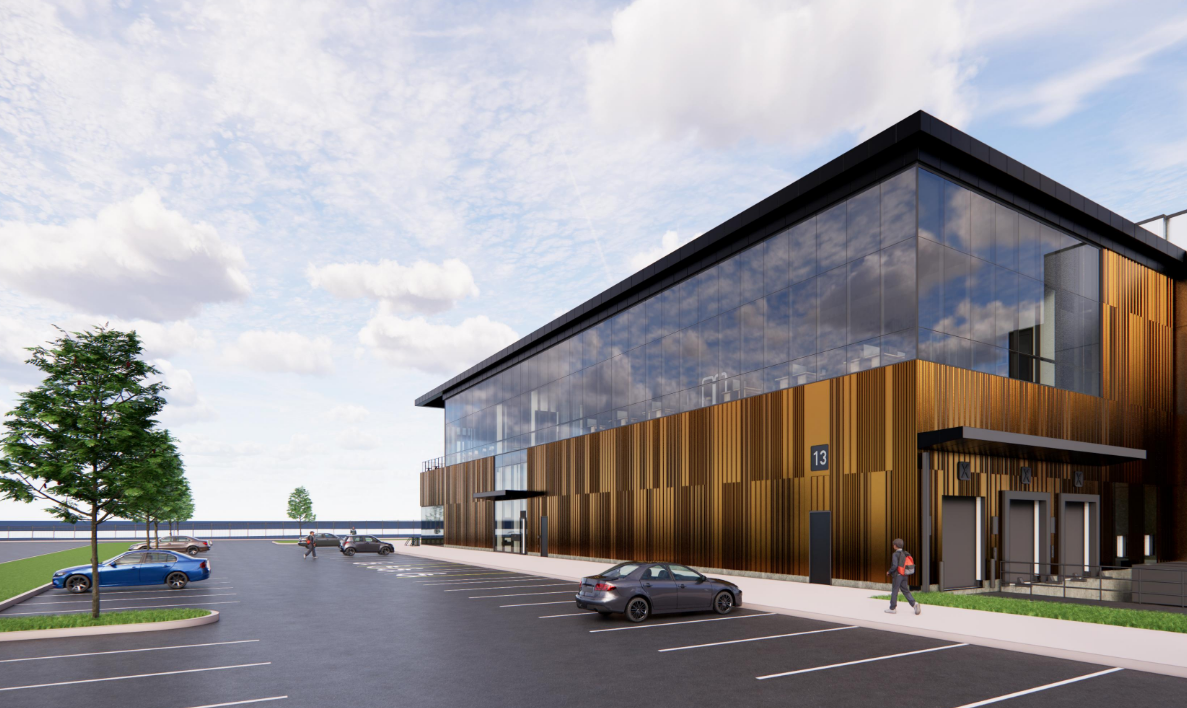In an ambitious move to meet its climate goals, Microsoft is experimenting with wood as a primary building material for its latest datacenters, located near a northern Virginia suburb. This innovative approach aims to drastically reduce the reliance on traditional materials like steel and concrete, which are significant contributors to carbon emissions.
The company is employing cross-laminated timber (CLT), a strong and lightweight prefabricated wood product that offers fire resistance and sustainability. This hybrid construction method combines mass timber with steel and concrete, potentially lowering the carbon footprint of two new datacenters by 35% compared to conventional steel structures and an impressive 65% compared to standard precast concrete designs.
These wood-based datacenters align with Microsoft's sustainability strategy unveiled in 2020, which aims for the company to become carbon-negative by 2030. This goal entails removing more carbon from the atmosphere than it emits, with an additional objective of eliminating all emissions since the company's inception in 1975 by 2050. While Microsoft has reported a 6.3% reduction in direct emissions over the past three years, it faces challenges from a 30.9% increase in indirect emissions, largely due to the growth of its datacenter operations.
To address these challenges, Microsoft has initiated a comprehensive approach to accelerate decarbonization across its operations. Jim Hanna, head of sustainability for the datacenter engineering team, emphasizes that achieving these goals is a collaborative effort within the company. This includes updating contract terms to incorporate low-carbon requirements for construction materials and equipment.
Key suppliers are also being encouraged to adopt 100% carbon-free electricity by 2030. Moreover, Microsoft is investing in advanced low-carbon materials, such as concrete that sequesters carbon and hydrogen-powered steel, to enhance commercial supply. The adoption of CLT marks a significant step, as this material has gained popularity in Europe for its sustainability and is only beginning to take hold in the U.S. market.
Microsoft is not alone in this effort; many companies are pursuing similar sustainability initiatives. Richard Hage, who leads global strategy for datacenter engineering at Microsoft, notes that suppliers are also working to reduce the embodied carbon of their products.
To foster market development for climate solutions, Microsoft has established a $1 billion Climate Innovation Fund. This initiative invests in startups and venture funds focused on creating lower-carbon building materials and clean energy solutions. To date, $761 million has been allocated to various technologies with potential for widespread impact, emphasizing the importance of innovation in achieving sustainability goals.
The fund also targets four critical areas where market forces have yet to adequately stimulate supply: carbon-free electricity, advanced materials, sustainable fuels, and carbon removal technologies. This approach includes both capital investment and contracts to purchase outputs, an uncommon strategy that positions Microsoft as a catalyst in the market.
In addition to its investments, Microsoft is focusing on using low-emissions steel and has become an investor in companies like Stegra, which is establishing a groundbreaking green steel plant in Sweden. This facility aims to reduce carbon emissions by up to 95% compared to traditional methods, using hydrogen derived from renewable energy instead of coal.
Furthermore, Microsoft is actively pursuing partnerships to promote the use of low-carbon concrete technologies, such as CarbonCure, which injects carbon dioxide into concrete, and Prometheus Materials, which utilizes microalgae to produce zero-carbon cement. These materials will be incorporated into Microsoft's Virginia datacenters as part of a pilot program.
As Microsoft seeks to drive wider adoption of sustainable materials, its scale gives it a unique advantage in influencing the market. The company’s commitment to using CLT—a material that has been used in construction for years but is still gaining traction in the U.S.—highlights its potential as a viable alternative to conventional building materials.
However, the journey towards widespread adoption of low-carbon materials is fraught with challenges, including higher costs and complex manufacturing processes. Despite these hurdles, Microsoft's strategic investments and innovative building practices signal a forward-thinking approach to sustainability in the tech industry.
Read More






 Thursday, 25-12-25
Thursday, 25-12-25







